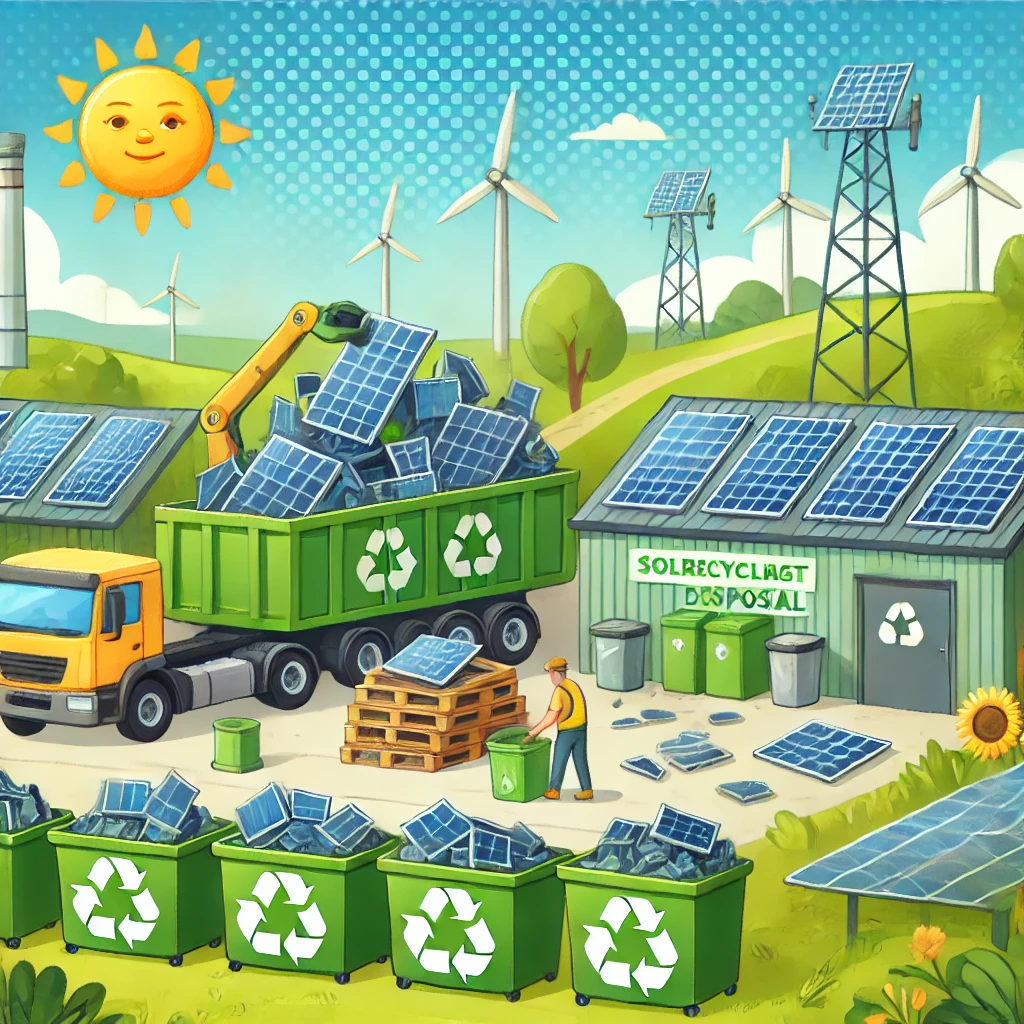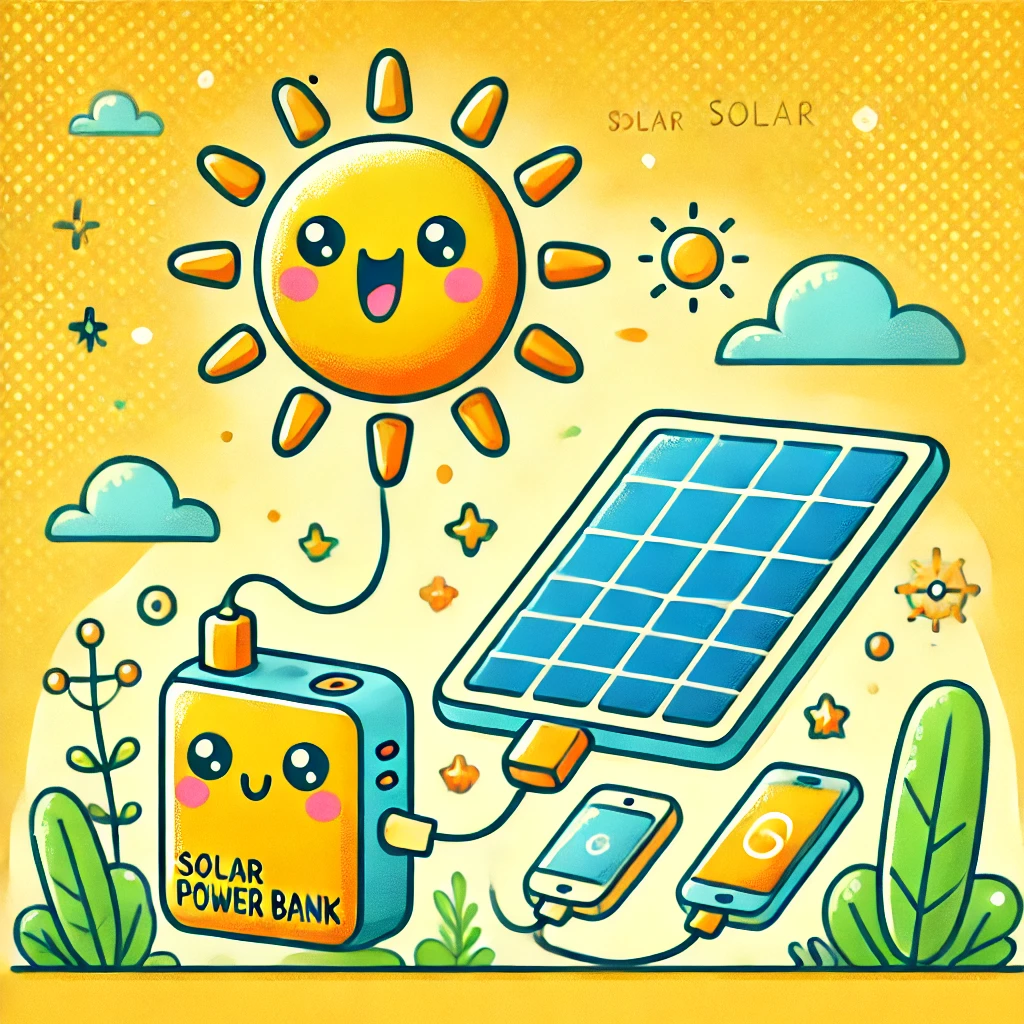Solar energy has become a cornerstone of the global transition to renewable energy, offering a clean, sustainable alternative to fossil fuels. However, as solar technology continues to expand, a new environmental challenge has emerged: solar waste disposal. With solar panels having an average lifespan of 25 to 30 years, the first wave of installations is nearing its end, leading to a growing need for responsible disposal and recycling solutions. In this article, we’ll explore the challenges and solutions associated with solar waste disposal, how it impacts the environment, and what the future holds for sustainable solar waste management.
What is Solar Waste?
Solar waste refers to the discarded components of solar energy systems, including solar panels, inverters, batteries, and mounting structures. While solar panels are the primary focus of solar waste discussions, other components also contribute to the growing volume of electronic waste generated by the solar industry.
Components of Solar Waste:
- Solar Panels: Composed of silicon, glass, aluminum, and sometimes toxic materials like cadmium and lead.
- Inverters: Convert DC electricity from solar panels to AC electricity for use, containing metals and electronic components.
- Batteries: Used in solar energy storage systems, often containing lithium, lead, or other hazardous materials.
- Mounting Hardware: Includes metal frames and brackets used to secure panels, typically made from aluminum or steel.
Why is Solar Waste Disposal Important?
While solar energy is a clean and renewable resource, improper disposal of solar components can lead to environmental pollution and health risks. Toxic materials found in some solar panels and batteries can leach into the soil and water if not handled correctly.
Key Reasons for Responsible Solar Waste Disposal:
- Environmental Protection: Prevents hazardous substances from contaminating ecosystems.
- Resource Recovery: Recovers valuable materials like silicon, silver, aluminum, and copper.
- Compliance with Regulations: Meets legal requirements for electronic waste management.
- Support for Sustainability: Promotes a circular economy by reusing materials and reducing the need for raw material extraction.
Challenges in Solar Waste Disposal
Despite the growing awareness of solar waste issues, several challenges hinder effective disposal and recycling efforts.
1. Lack of Infrastructure
Many regions lack dedicated facilities for solar waste disposal and recycling, making it difficult for individuals and businesses to manage their solar waste responsibly.
2. High Recycling Costs
Recycling solar panels and other components can be expensive due to the complexity of materials and the need for specialized processes. This often makes landfill disposal a cheaper, albeit environmentally harmful, option.
3. Complexity of Materials
Solar panels are composed of multiple layers of materials, including glass, silicon, and metals, which require different recycling techniques. This complexity increases the cost and difficulty of recycling.
4. Regulatory Gaps
Inconsistent regulations across countries and regions can lead to confusion and hinder the development of standardized solar waste management practices.
How is Solar Waste Disposed of?
There are several methods for managing solar waste, each with its own environmental and economic implications. The choice of disposal method often depends on local regulations, available infrastructure, and the condition of the solar components.
1. Recycling
Recycling is the most environmentally friendly option for solar waste disposal. It involves breaking down solar panels and other components to recover valuable materials for reuse.
Recycling Process:
- Collection and Transportation: Solar waste is collected from decommissioned sites and transported to recycling facilities.
- Disassembly: Components are separated into their constituent materials (glass, silicon, metals).
- Material Recovery: Valuable materials like silicon, silver, and aluminum are extracted and purified for reuse.
2. Landfilling
While cheaper than recycling, landfilling is the least sustainable option. It involves burying solar waste in designated landfill sites, which can lead to environmental contamination if hazardous materials are present.
3. Reusing and Repurposing
Functional solar panels and components can be refurbished and resold or repurposed for less demanding applications. This extends the lifespan of solar products and reduces waste.
4. Manufacturer Take-Back Programs
Some solar manufacturers offer take-back programs, where they collect and recycle old solar panels and components. This approach simplifies the disposal process for consumers and ensures responsible waste management.
For More Reviews You May Read:
Leading Solar Waste Disposal and Recycling Companies
Several companies around the world are dedicated to managing solar waste responsibly. These companies offer innovative recycling solutions and promote sustainable practices within the solar industry.
1. SolarCycle (United States)
SolarCycle specializes in high-efficiency solar panel recycling, using proprietary technology to recover valuable materials and minimize waste.
2. PV Cycle (Europe)
PV Cycle is a non-profit organization that operates a network of solar panel recycling facilities across Europe, offering comprehensive recycling solutions for both silicon-based and thin-film panels.
3. Reclaim PV Recycling (Australia)
Reclaim PV Recycling focuses on recovering over 90% of materials from old solar panels, contributing to a circular economy in Australia.
4. First Solar Recycling Facilities (Global)
First Solar operates recycling facilities worldwide, specializing in cadmium telluride (CdTe) thin-film panels and recovering up to 90% of materials.
5. NPC Incorporated (Japan)
NPC Incorporated is a leading solar recycling company in Japan, offering innovative solutions for silicon-based panel recycling.
Regulations and Policies Affecting Solar Waste Disposal
Governments worldwide are beginning to implement regulations to address the growing issue of solar waste. These policies aim to promote recycling, reduce environmental impact, and ensure proper disposal practices.
Key Regulations:
- Extended Producer Responsibility (EPR): Requires manufacturers to manage the end-of-life disposal of their products.
- Waste Electrical and Electronic Equipment (WEEE) Directive (Europe): Mandates the recycling of electronic waste, including solar panels.
- State and Local Regulations (United States): Vary by state, with some requiring specific solar waste management practices.
The Future of Solar Waste Disposal
As the solar industry continues to grow, so too will the need for effective solar waste disposal solutions. Advances in recycling technology, increased regulatory support, and greater public awareness are driving improvements in solar waste management.
Emerging Trends:
- Technological Innovations: New recycling methods are making solar waste disposal more efficient and cost-effective.
- Government Incentives: Policies and subsidies are being introduced to support solar waste recycling initiatives.
- Circular Economy Models: Manufacturers are designing solar products with recyclability in mind, promoting sustainable practices.
- Global Collaboration: International efforts to standardize solar waste disposal practices are helping to create a more sustainable industry.
Conclusion
Solar waste disposal is a critical aspect of maintaining the sustainability of the solar energy industry. As the number of decommissioned solar panels and components grows, responsible disposal and recycling practices will become increasingly important. By understanding the challenges and solutions associated with solar waste, individuals, businesses, and governments can contribute to a cleaner, greener future.
Supporting innovative recycling companies, adhering to regulations, and promoting sustainable practices are essential steps toward ensuring that solar energy remains a truly renewable and environmentally friendly resource.



